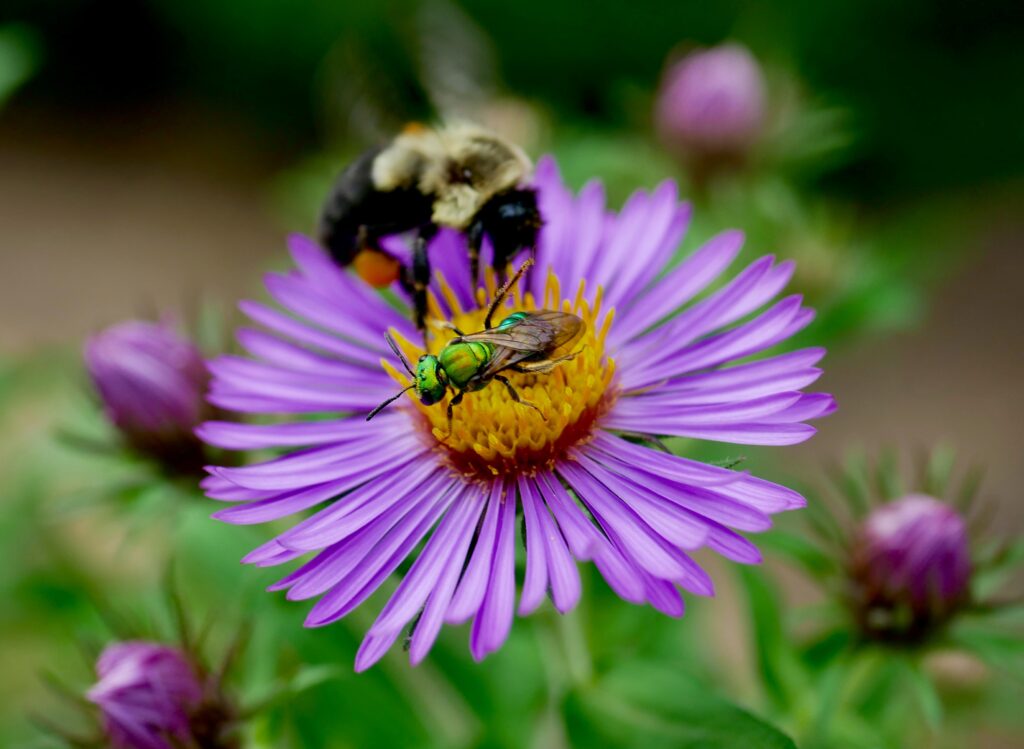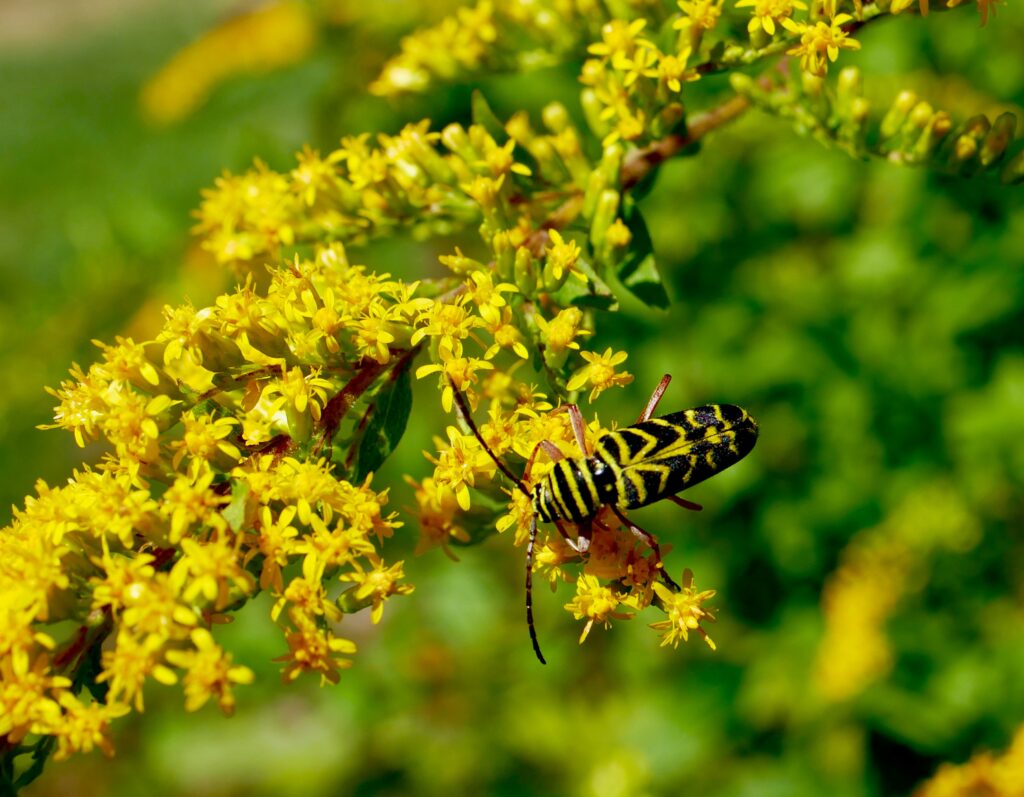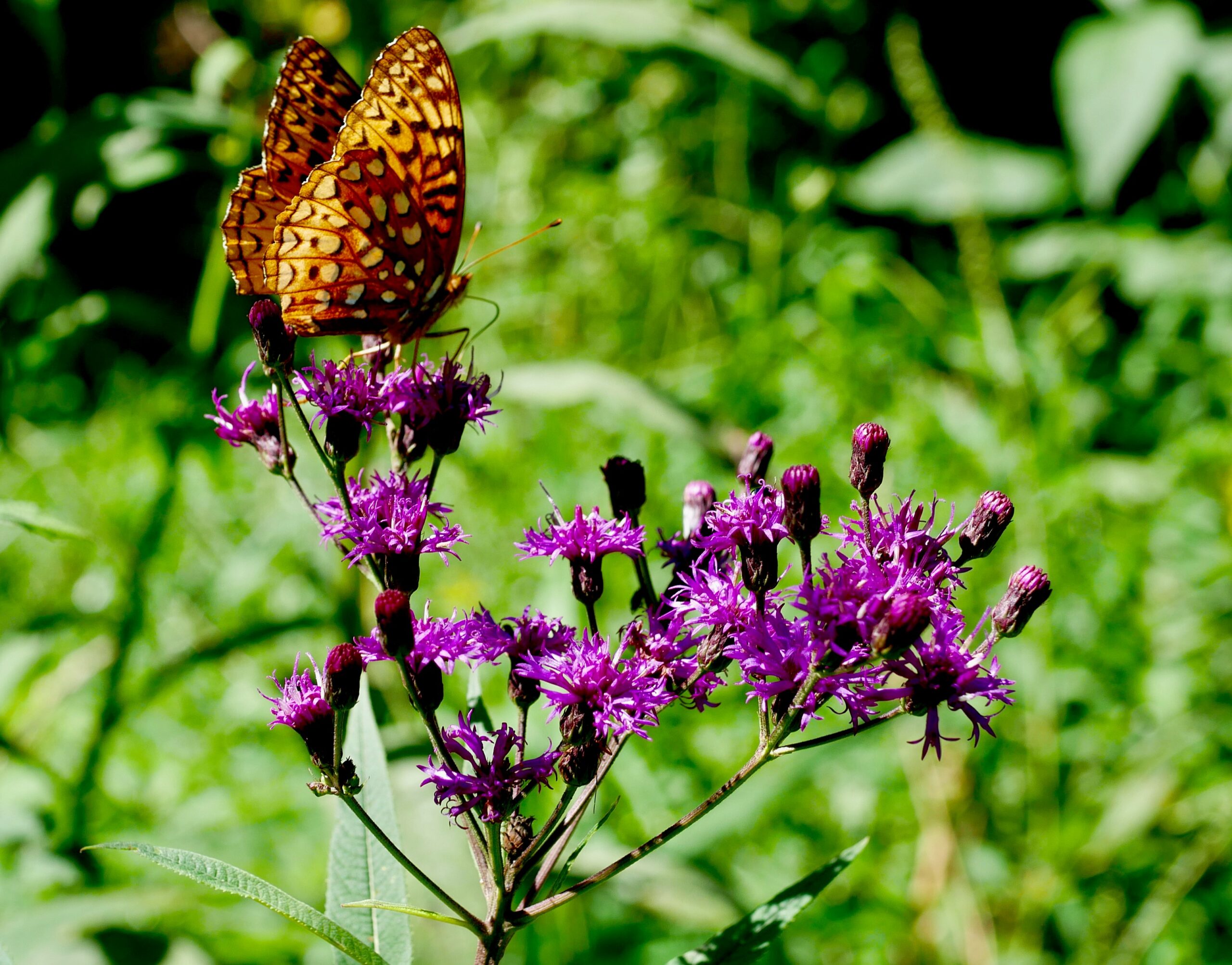By David P. Davis
Newsroom@DominionPost.com
As summer wanes, it may seem like there is less to see as we explore gardens, but to me, September is a month when nature shines through asters. Fields of aster’s star-like blooms support many unique species of insects for us to discover.
Asteraceae is one of the largest families of flowering plants (second only to Orchidaceae), and includes everything from daisies to sunflowers, and includes many economically important plants. Aster is from the Greek meaning “star” for its star-like blooms.
Now blooming at the WVBG is the New England aster, Aster novae-angliae, in the Butterfly Garden. This lavender-pink aster is, to me, the quintessential, late-season aster. It has the classic star-shaped blooms and grows into a herbaceous bush (3-4 feet tall) with dense clusters of flowers. While asters are considered rather deer tolerant, ours do get nibbled by deer earlier in the season, causing a robust response by the plant to produce more branches and flowers for the fall boom.

Another aster in bloom along our roadsides and at the WVBG is New York ironweed, Vernonia noveboracensis. This aster grows up to7 feet tall and is capped by a loose, terminal cluster of purple aster blooms. This aster stands out in wildflower fields due to its height and its deep-purple color, in contrast with so many other late season asters that are often yellow or white. Also, New York Ironweed is a favorite with butterflies who rely on them for nectar.
Our last aster for this week is goldenrod, Solidago spp. There are actually about 100 species of goldenrod native to North America and many are now blooming at the WVBG. We have a large clump of Canadian goldenrod in the Yagle Garden that is now in bloom for those who want to take a closer look. This I recommend, not only to take in the rich yellow color of these rays of aster blooms, but to see if you can find locust borer adults, Megacyllene robiniae. These yellow-and-black striped longhorn beetles (family Cerambycidae) are rather large, getting to about 1 inch long — and, are they focused! They work goldenrod not only for pollen and nectar but also to find mates. Their striped pattern includes a W-shape on the elytra (wing coverings) and, with a little imagination, I think it looks like a “WV.”
In all cases, asters are not only special in their own right, but through asters you can explore nature for hours finding many unique species of insects leveraging aster energy to complete their lifecycles.
See what you can find on asters at the WVBG and in natural areas near you.
David P. Davis, Ph.D., is a gardener at the WVBG. For visiting information, maps, and more, visit WVBG.org.





